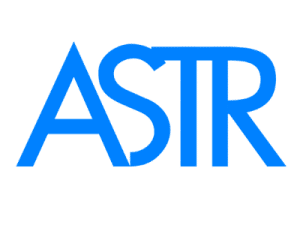How Inflammation Affects Fascia and Triggers Pain
How Inflammation Affects Fascia and Triggers Pain
Search terms: inflammation and fascia, chronic inflammation pain treatment
🔥 Could Inflammation Be Silently Attacking Your Fascia?
When we think about inflammation, we often picture swollen joints or sore muscles. But what if chronic inflammation is also damaging your fascia—the connective tissue network that holds your body together?
This hidden connection between inflammation and fascia could be the root cause of your chronic pain, stiffness, and fatigue.
🧠 What Is Fascia?
اللفافة is a thin, flexible web of connective tissue that surrounds every muscle, bone, organ, and nerve. It helps maintain structure, supports movement, and acts like a communication highway for your nervous system.
Healthy fascia is elastic and smooth. But when it becomes inflamed or injured, it tightens, thickens, and sticks to surrounding tissues—a process called fascial adhesion.
🔥 The Inflammation–Fascia–Pain Cycle
Here’s how chronic inflammation creates long-term fascia problems:
-
Inflammatory chemicals (like cytokines) irritate fascia, making it sticky and dehydrated
-
Fascia loses its glide and becomes rigid and tight
-
Tight fascia compresses muscles, joints, and nerves
-
This increases pain, stiffness, and limited movement
-
The resulting immobility fuels even more inflammation—creating a vicious cycle
🤕 Common Signs Fascia Is Inflamed
-
Pain that feels deep, spreading, or hard to pinpoint
-
Morning stiffness that improves with movement
-
Muscles that feel tight even after stretching
-
Tender spots or trigger points that recur
-
Chronic fatigue or heavy-feeling limbs
-
Soreness after light activity
🧬 What Causes Fascia Inflammation?
-
Injury or surgery
-
Poor posture or overuse
-
Autoimmune conditions (e.g., lupus, RA)
-
Toxin buildup and poor circulation
-
High inflammatory diet (processed food, sugar, trans fats)
-
Chronic stress, which increases cortisol and inflammatory load
✅ Natural Ways to Reduce Fascia Inflammation and Pain
1. Myofascial Release With ASTR Tools
Dr. Joseph Jacobs, DPT, developed ASTR (Advanced Soft Tissue Release) to break the inflammation-pain cycle. His patented tools gently release fascial adhesions without force, helping reduce pressure, improve circulation, and restore glide.
🔗 Use ASTR Tools to Calm Inflamed Fascia Naturally
2. Follow an Anti-Inflammatory Diet
The ASTR Diet—detailed in Eat to Heal—focuses on clean, whole foods that reduce inflammation and support tissue repair. Avoid sugar, seed oils, processed grains, and excess caffeine.
3. Move Often, But Gently
Low-impact activities like walking, stretching, and fascia-specific movement restore hydration and prevent stiffness.
4. Manage Stress and Sleep
Chronic stress drives inflammation. Prioritize deep breathing, prayer, or vagus nerve stimulation, and aim for 7–9 hours of sleep nightly.
📘 Learn More in Pain No More
In Pain No More, Dr. Jacobs reveals how addressing fascial inflammation helped him overcome chronic pain—and how you can, too, using natural, science-based strategies.
🔬 What the Research Says
-
Schleip et al. (2012): Fascia is innervated, reactive to inflammation, and a key source of pain
-
Langevin et al. (2009): Chronic inflammation stiffens fascia and disrupts tissue function
-
Wilke et al. (2017): Fascial inflammation plays a major role in musculoskeletal disorders
✅ Final Thoughts
If you’ve been treating inflammation with medications or general stretching and still feel tight and sore, your fascia may be the missing piece. Myofascial release with ASTR tools and anti-inflammatory lifestyle changes can help you heal naturally—at the root.

